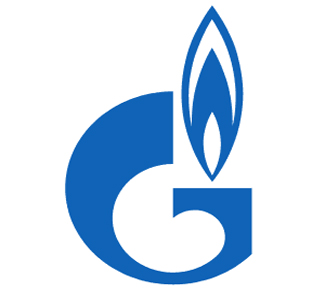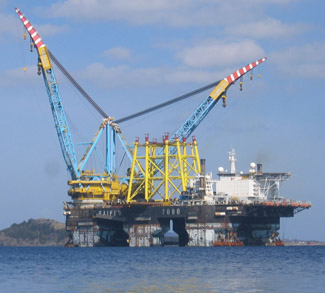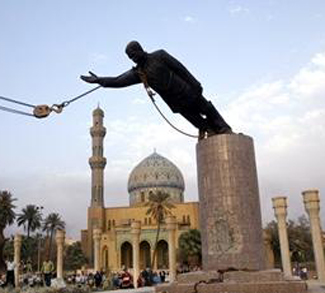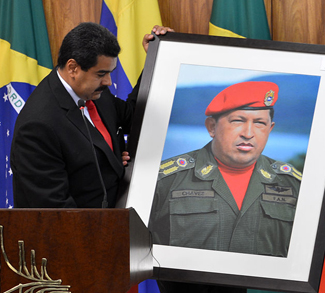Britain’s exit from the European Union is a huge blow to European project with potentially devastating implications for its’ latest flagship policy – Energy Union. The United Kingdom has been one of the strongest proponents of EU energy market integration, liberalization, and diversification. By using the power of consorted action, Energy Union was intended to confront gas monopolies, such as Gazprom, in the fight against price discrimination and market distortions. As fallout from Brexit rattles Brussels, Kremlin-backed Gazprom is well positioned to seize the moment to recapture this lucrative market for Russian gas. This article takes a closer look at recent developments in European Union energy policy and examines opportunities for Gazprom to gain a stronger influence over downstream energy relations in the continent.
The State of the Energy Union was created by the European Commission in February 2015 on the following promises: diversification through embracing LNG exports from alternative suppliers, market integration by building gas interconnections among EU member states, and ownership unbundling of critical gas infrastructure. Despite member states’ pledge for unconditional support of this policy, public support for the Energy Union has been dismal. The controversial Nord Stream- 2 pipeline along with Gazprom’s recent acquisition of strategic gas storage facilities within the EU have raised eyebrows across Europe’s capitals. Delays in building critical gas transmission lines between northern and southern Europe further eroded public confidence in European Energy Union.
Yet, there have been some positive developments for this policy as a result of increasing competition and liberalization of the EU gas market. Eastern and central Europeans zealously embraced growing LNG exports from Qatar, Australia, and the United States. Preference for LNG over piped gas in Lithuania and Poland has already cost Gazprom billions in lost revenues from re-negotiating purchasing contracts. After commissioning “Freedom” LNG Terminal in Klaipeda, Lithuanian utilities were able to reduce the purchase price of Russian gas by 23%, from about 32.9 Euro per megawatt/ hr to 25 Euro per megawatt/ hr. Poland, which relies on Russian gas for 2/3 of its imports, recently announced that it would not renew its contract with Gazprom after it expires in 2022. Gazprom issued a press-conference immediately after the announcement to remind stakeholders that both Gazprom and Poland have ‘always found compromises’ since Poland began importing gas from Russia in 1948.
The lack of unified agenda has proved to be Europe’s “Achilles Heel” that Gazprom has been successfully exploiting.
While LNG exports to Europe clearly strengthened the bargaining position of European governments vis-a-vis Moscow, they have not freed the continent from Russian gas. There are several reasons why this has not yet happened. There are strong headwinds against LNG in Europe, which include low energy prices and sluggish demand in the EU. Gazprom Chief Executive Officer recently took a swipe at American LNG saying that it will not a “panacea” for Europe, and suggested the company is ready to embrace the competition. Indeed, gas prices across Europe have fallen 37%, which does not favor a satisfactory return on investments in large scale LNG terminals. Many hope that LNG spot market could be competitive with piped gas in the long run as technology and economies of scale move forward. However, those EU countries that opted for LNG exports already today seem to prioritize geopolitical risk and security of supply over short term economic benefit. Regardless of the rational for LNG imports to Europe, member states have opted to set their own policy agenda instead of forming a unified front across Europe.
The lack of unified agenda has proved to be Europe’s “Achilles Heel” that Gazprom has been successfully exploiting. In 2015 Gazprom supplied record volumes of gas to Europe- 158.56 bcm, which is 8% increase from 146.6 bcd in 2014. The bulk of these deliveries were to western Europe and eastern Europe took only 18%. Despite geopolitical tensions between Moscow and Brussels, Gazprom has been successfully implementing the strategy of “divide and conquer” with some powerful support within the European Union. Nord Stream-2 pipeline, a joint German-Russian project became the building block of that strategy, which runs contrary to the agenda of Energy Union. Stream-2 (annual capacity of 55 bcm) will deliver gas to Germany and western Europe, bypassing transit routes in Ukraine, Poland and Czech Republic, stripping them of transit payments. Nord Stream-2 by design is a twin pipeline of already operational Nord Stream that is fed into the German grid connected to at least five transition pipelines (JAGAL, MIDAL, STEGAL in the east, WEDAL and Hamburg-Rehden in the west, all of which are controlled by Gazprom-Wintershall joint company Gascade Gastransport). However, current gas demand in Germany is rapidly declining due to competition from subsidized renewables and cheap coal. This energy equation makes additional gas volumes delivered by Nord Stream- 2 obsolete in Germany’s electricity generation and heating. What makes more sense for Germany is to transfer these gas molecules further west- to France and the Netherlands. Dynamic western Europe energy markets are also highly sought after destination for LNG producers. To prove the point of real destination for Nord Stream 2 gas, one simply needs to examine the planned gas infrastructure projects that will be constructed simultaneously with the Stream. In contrast with long awaited North-South corridor interconnections, these lines had no difficulty in quickly finding agreeable investors. Stream-2 annual capacity perfectly matches combined capacity of 55 bcm of OPAL and NEL – new transit lines in German territory, which makes Gazprom an exclusive provider of gas to both lines. OPAL is slated to feed some volumes (via Gazelle) into the MEGAL pipeline (44-percent French interest), which runs from Bavaria into France. NEL (with 39-percent Dutch and Belgian interests) is planned to reach from northwestern Germany into the gas markets of the Netherlands and Belgium and potentially farther afield. By design OPAL and NEL could be fed only with Russian gas, transforming them and Germany into a new transit choke point of Russian gas in Europe.
Another building block of Gazprom strategy in Europe is the acquisition of strategically located gas storage units along OPAL and NEPAL route. In fact, these storage sites controlled by Gazprom in Germany are planned to operate in congruence with Gazprom-controlled transmission pipelines. Consequently, throughout the value chain of Nord Stream-2 there is only one dominant player – Gazprom – and risks to the ‘security of supply’ are not diversified among various actors but instead reside entirely with the Russian gas giant. According to the European Union’s Third Legislative Package gas, producers and suppliers cannot control the transport and storage infrastructure simultaneously. Yet, in the German case someone willingly turned the blind eye to Gazprom’s breach of the EU law.
There is no surprise that eastern European nations that lack access to gas supply from the Western Europe fiercely oppose this pipeline. In March 2016 leaders of Latvia, Lithuania, Poland, Czech Republic, Slovakia, Romania, Estonia and Hungary signed a letter of objection to European Commission. Their position was supported by western European governments that are not benefiting from the Nord Stream pipeline, which included Italy and United Kingdom. The addition of the UK to the anti-Nord Stream 2 camp in Europe transformed it into truly meaningful opposition that had to be reckoned with. It was expected that considerable pressure from a united western-eastern opposition to the pipeline would force Gazprom to make further concessions to eastern European countries in terms of price and contract terms. However, with Britain out of the European equation it becomes less clear how much influence the eastern European bloc can have on its own. The same logic applies to Gazprom strategy in Ukraine. The company announced that it would stop all gas supplies though Ukraine by 2019. It was expected that Russia might suggest that it would maintain supplies to Ukraine as long as there is an acceptable payment agreement; it could even be by a third party. Without coordinated action from EU member states on this issue it would be hard to find that responsible third party.
Consequent to Nord Stream 2 and tight partnership with German utilities, Gazprom is expected to increase its gas export capacity to Europe. By flooding Europe with gas, it will further depress gas prices on the continent. If Russia chooses to do so, it can easily price out LNG competition in short to medium term. By implementing the strategy of rapid export increases and picking out “partners in crime” Gazprom sends a clear message that it is in control of the European gas market. But it doesn’t have to be that way. Despite the shock waves Brexit has sent though the European Union it is essential for the remaining member states to maintain ambition and momentum of the Energy Union. Nord Stream -2 is a major step back for that policy but just because one builds a line, it doesn’t mean that it will be utilized. This will be a European choice that will not be controlled by any gas monopoly.
The opinions, beliefs, and viewpoints expressed by the authors are theirs alone and don’t reflect any official position of Geopoliticalmonitor.com.




